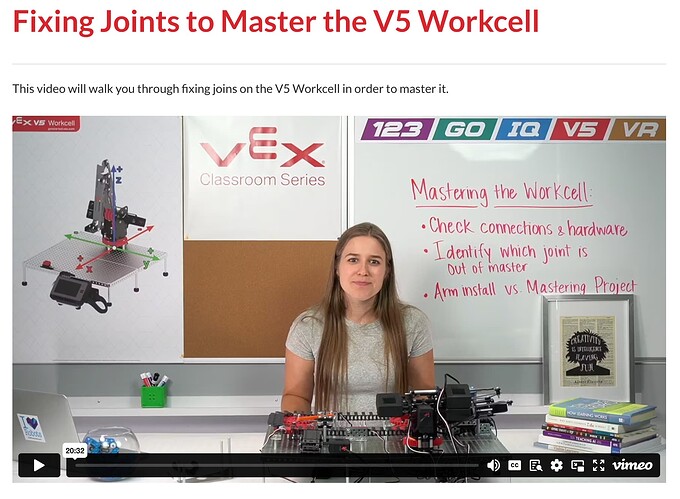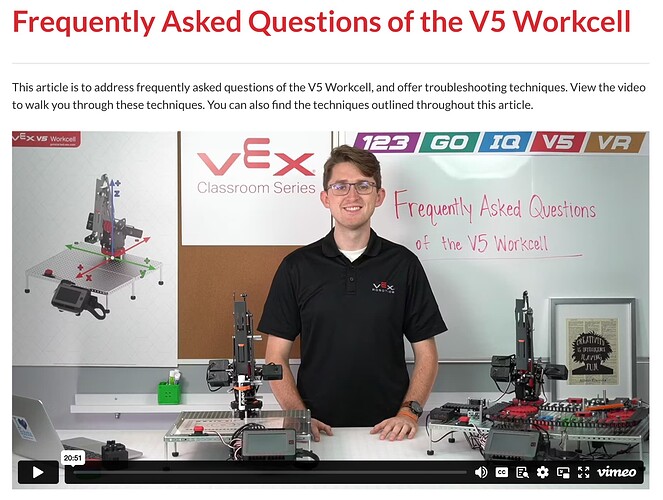Whenever I’m speaking with educators either at shows or other avenues of feedback, the question that I receive the most is always about Mastering Values.
So, what exactly are mastering values? I took this from Workcell STEM Lab 1 to help explain.
"Industrial robots in general, and specifically the V5 Workcell, need to operate in a way that is safe and repeatable. To achieve this, a ‘home location’ is needed. A ‘home location’ ensures that the robot can accurately repeat the same movements, as well as operate in a way that does not cause damage. On the V5 Workcell, the motors do not have physical limits in the same way that the metal of the Workcell does. The physical V5 Workcell however, does have limits and cannot move in certain orientations. Because of this, the motors could potentially continue to spin and move, even though the Workcell itself has physical limitations, causing it to potentially break. The mastering process helps ensure that the robot has a ‘home location’ to start from, as well as provides a range of values so that the Workcell can operate safely.
Robot mastering at a higher level, identifies the geometrical parameters of an industrial robot, such as the relative position of the joints in the robot. The mastering process is a type of calibration that increases the positioning accuracy of the robotic arm of an industrial robot. Robot mastering is performed to set the correct positions of each axis of the robot arm, relative to the base cartesian coordinate system (x, y, z).
In order to master the V5 Workcell, first we need to know the range of acceptable values that the V5 Workcell can safely operate in. This is important, because it ensures that the Workcell has a ‘home location’ to start from. Obtaining and recording these values, allows the V5 Workcell to be calibrated to the same ‘home location’ each time it operates. This is an important piece of information that is used when coding the V5 Workcell using VEXcode V5 to ensure that it operates within its pre-determined range of motion to prevent damage.
The mastering values seen in both the ‘Arm Install’ and ‘Arm Mastering’ example projects, are actually four different ranges of potentiometer values - one for each joint on the V5 Workcell. These ranges of potentiometer values are the ranges that each joint on the Workcell can operate safely in. Using potentiometers on the V5 Workcell ensures that it was built and assembled properly. The potentiometers are required to be installed at a certain position and at a certain rotation so the Workcell knows its ‘home location’ and functions as intended."
Okay great! So, how exactly do I master the Workcell? I walk you through step by step in the VEX V5 Workcell Educator Certification Training Course. Specifically, Chapter 2 Lesson 2.
Trouble mastering the Workcell? No problem. We have a bunch of resources to help you, including this video that will walk you through fixing joins on the V5 Workcell in order to master it:
As well as this article to address frequently asked questions about the Workcell:
Another thing that I would like to point out, is that I often see a lot of users trying to code the Workcell using VEXcode V5 without putting their mastering values in the code. Please note that putting the mastering values in the code is required in order for the Workcell to function properly.
Still having problems with mastering? No worries, book a 1-1 Session with one of us (VEX Experts) and we would be more than happy to walk you through it ![]()





